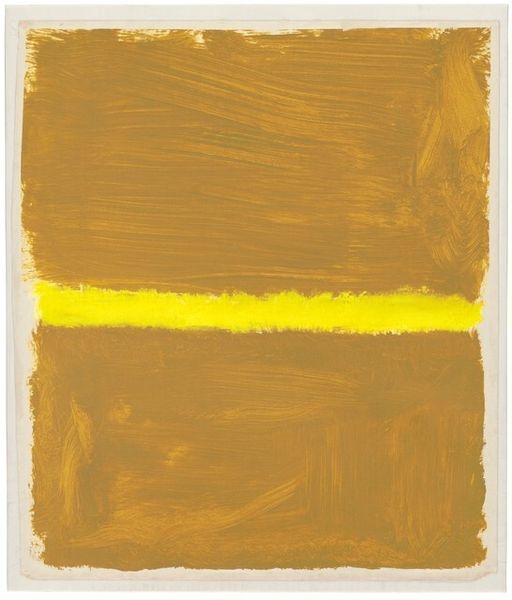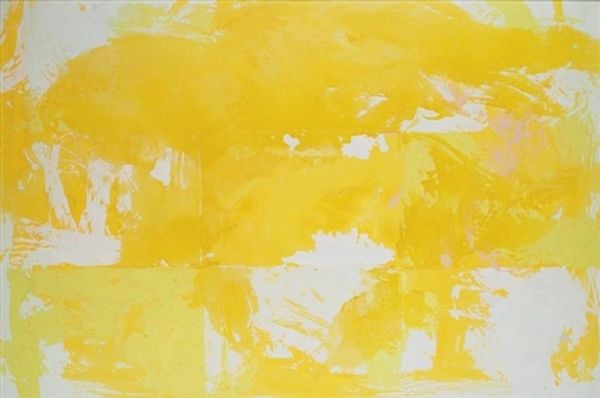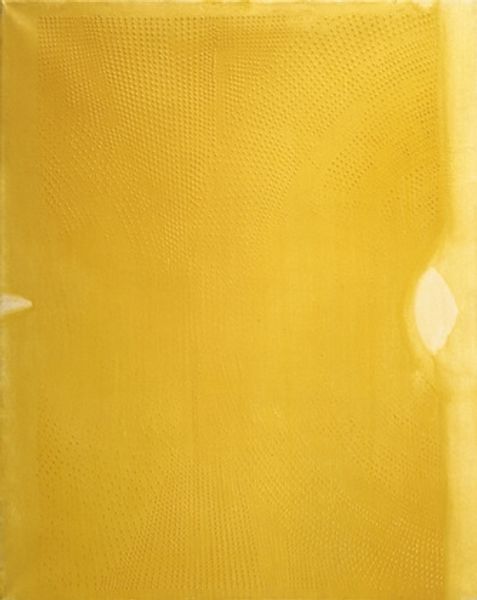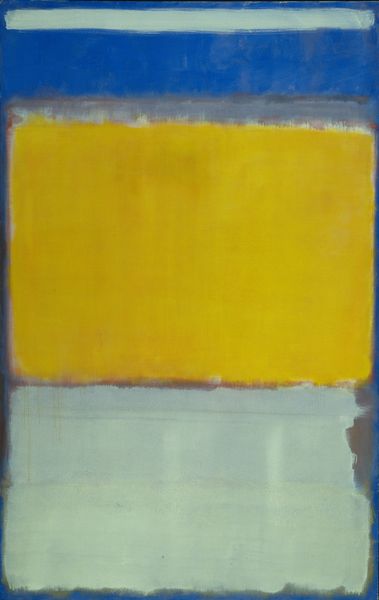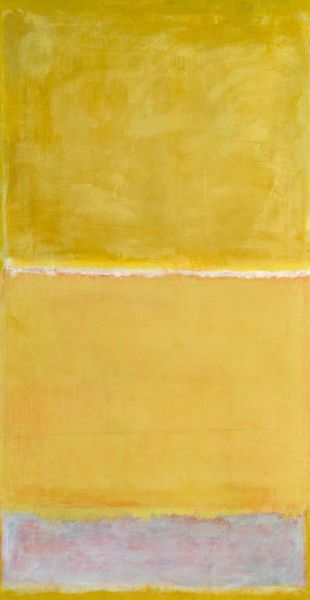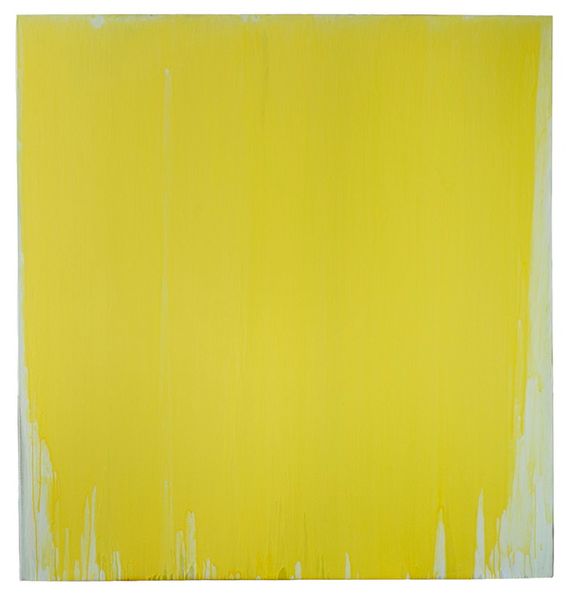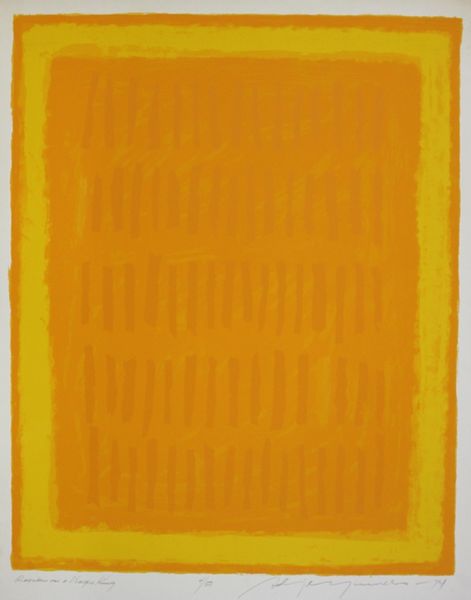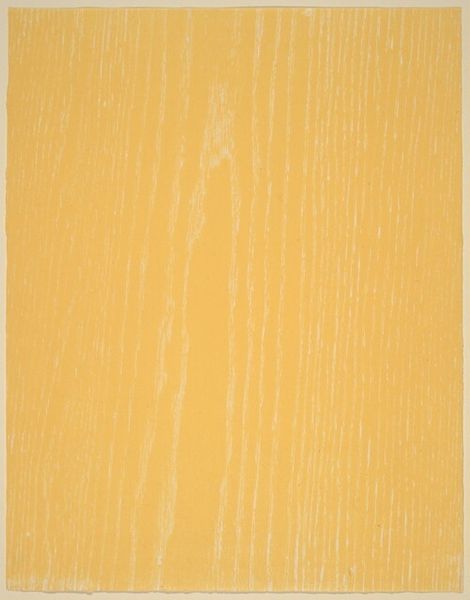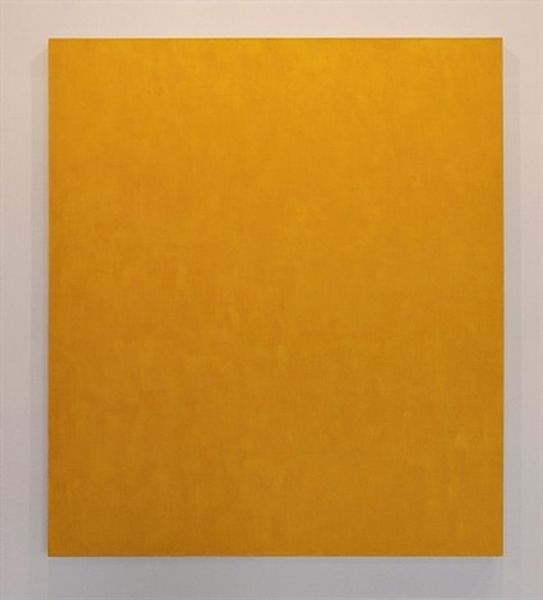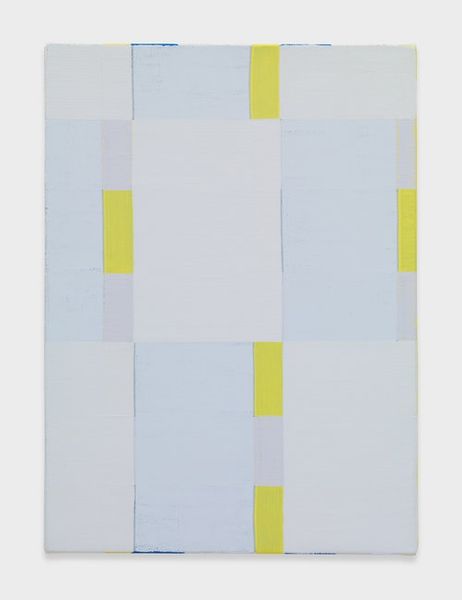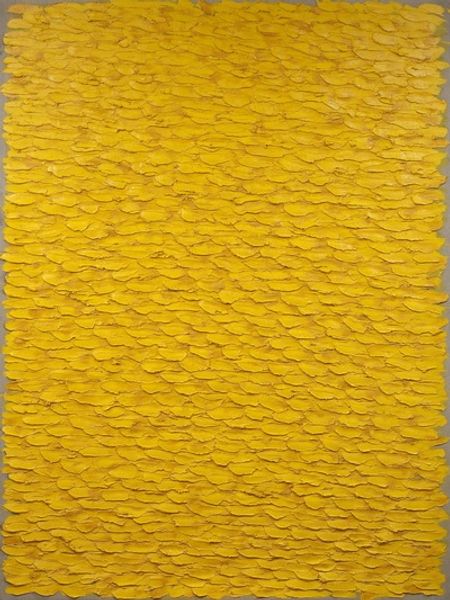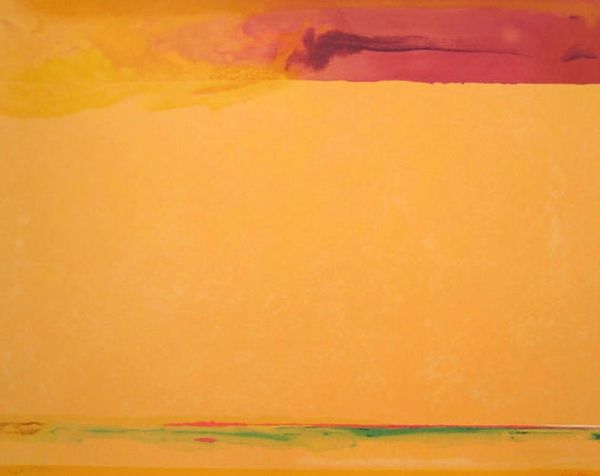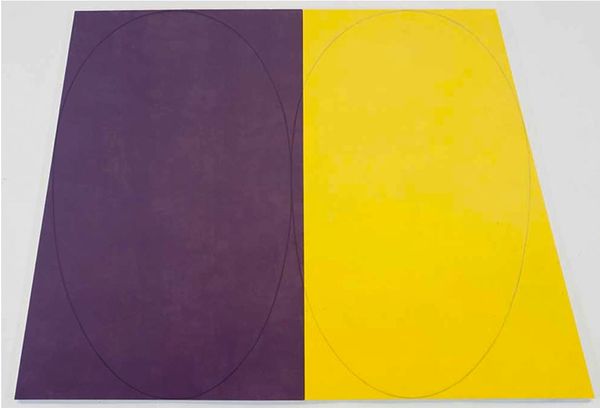
Copyright: Marcia Hafif,Fair Use
Curator: Upon first glance, this piece evokes for me warmth and an almost liquid sunlight quality. It has a depth and texture that invites close examination. Editor: And that's fitting given the history. What we are looking at is Marcia Hafif's "Indian Yellow," a watercolor painting dating back to 1975. Hafif was deeply engaged in exploring monochrome painting and its capacity to express complexity and meaning, so it's critical to note the sociopolitical context in which the artist was actively dismantling the male-dominated canon through abstraction. Curator: You're right. The seeming simplicity belies its depths. This wash of yellow reminds me of saffron threads or even the dye from turmeric; there's an inherent symbolism in the color choice. The very title makes a powerful historical link to colonialism. Editor: Yes, there’s an interplay here with that tension. "Indian Yellow" references a pigment historically derived in India from cow urine—a substance sacred in Hinduism— and we have to consider this. Curator: I am drawn to that tension; I am reminded, however, that even what we might view as minimalism or the monochrome carries historical, cultural and sometimes harmful political weight. In this case, Hafif appropriates color and pigment that carries with it that historical burden. Editor: Absolutely, it’s about seeing the layered narratives within color. How does this painting speak to the lineage of minimalist practices and the use of color, considering Hafif's engagement with feminist art? Curator: The very repetition and layering involved in watercolor feels inherently feminine. She stakes her claim within a movement that denied those who were female-identifying artists their place at the table. Editor: The monochrome effect actually accentuates the minute textures, these organic forms that move horizontally through the canvas, drawing attention to process and materiality. This becomes very apparent as you consider other pieces by Hafif such as her paintings based in shades of blue and violet where a similar, wave-like grain dominates. Curator: Seeing the piece this way reinforces that to extract pure color, whether physically from historical pigments or figuratively, one inevitably deals with the complexities that have contributed to this expression. I appreciate the conversation, because what may initially seem minimal invites us into more maximal considerations of artmaking itself. Editor: It’s important to acknowledge how an artwork and even this single application of pigment embodies more complex questions than simple optical sensations, touching on historical narratives, colonial legacies and cultural associations.
Comments
No comments
Be the first to comment and join the conversation on the ultimate creative platform.
